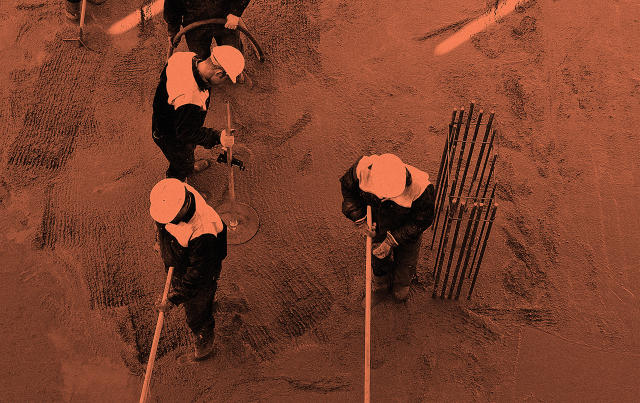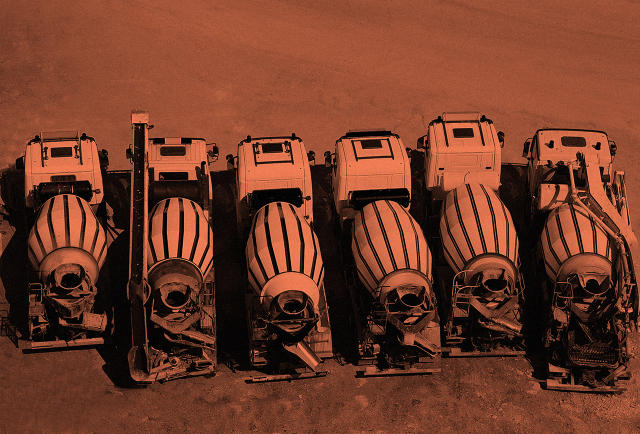Concrete has been critical to the colonization of our own planet. The Romans and Egyptians built their empires upon it, and when their formula for concrete was lost, humanity invented it all over again in the 14th century. Today, over 2 billion tons of concrete are produced every year, and by 2050, that's expected to quadruple.
When we finally start colonizing other planets like Mars, we're going to need concrete to make buildings and infrastructure. But concrete needs water, and Mars doesn't have any. How do we make it, then? A team of researchers at Northwestern think they have the answer: by heating sulfur up to 240 degrees Celsius until it liquefies, and using that instead.
Clik here to view.

On Earth, concrete a composite material made up of multiple ingredients (called an aggregate) such as limestone, granite, sand, and other crushed rocks, which are bonded together with cement. Confusingly, we often use "cement" and "concrete" as synonyms for one another, but chemically, water is the cement that holds concrete together. When concrete is mixed with water, it not only becomes malleable, it reacts chemically so that it forms a hard, durable, solid matrix when it dries.
The aggregate part of concrete is easy enough to find on Mars, but water's a big problem. However, Mars has tons of sulfur, maybe as much as 17% of the entire planet. That's why Northwestern's researchers think that sulfur is going to be the key to the Red Planet's big construction boom. But researchers have tried to make sulfur concrete before: in fact, in the 1970s, material scientists explored the possibility of using sulfur concrete to build bases on the moon. The problem with that idea? In a vacuum, sulfur doesn't become a liquid. It goes straight from solid to gas, making sulfur concrete impossible to make on planets without an atmosphere.
Clik here to view.

But Mars has an atmosphere. It's not a vacuum like the moon. And as the Northwestern team discovered, it's sufficient to make sulfur concrete. By using simulated Martian soil consisting of silicon dioxide, aluminum oxide, iron oxide, titanium dioxide, and mixing this aggregate 50/50 with molten sulfur, they were able to make blocks of quasi-Martian concrete. And it's strong: two-and-a-half times as strong as the concrete most commonly used on Earth.
There's another advantage of Martian concrete over Earth concrete, too. On Earth, concrete production is the third biggest contributor of CO2 emissions, largely because of how much concrete we use. And recycling concrete doesn't help curb that production, because while we're tearing down concrete structures all the time, it's time-consuming and resource-intensive to reuse. But on Mars, the concrete could literally just be re-heated until the sulfur melts, and the entire concrete block becomes malleable again. That means any Martian concrete will be almost infinitely reusable, without taking the same toll on Mars as it took on Earth.
Of course, we're many years away from Martian colonies. But if the Northwest team is right, when Mars's answer to Bjarke Ingels or Zaha Hadid finally breaks ground on the Red Planet, they may be working with a superior version of the same material we use on Earth. Martian architecture will be out of this world.
[via Technology Review]
